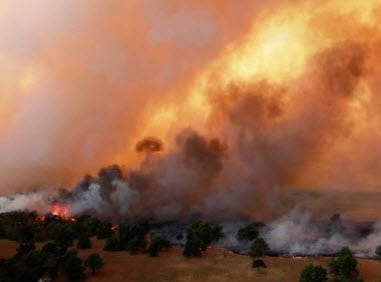As the brush fires and blazes moved ahead, insurers started to step back from providing coverage.
Near the start of October, homeowners insurance companies found themselves covering the majority of the almost 5,000 claims that were made as a result of two wildfires that occurred in September in Northern California and agreed both to provide the policyholders with a larger amount of time in which to document their claims and to boost the speed of the payments.
That said, following one of the worst wildfire seasons in the state, the insurers are finding it tough to stick around.
As the wildfires worsen, homeowners insurance companies are starting to step away from the areas where the risk is the highest, making it increasingly challenging for property owners in those regions to find any coverage at all. Moreover, this trend isn’t limited to the northern part of the state. In Southern California, the Simi Valley is under an hour’s drive from Los Angeles and is made up of a suburb of over 100,000 people. It’s made of densely built gated communities in a typical suburban style and yet in August, the people who lived there were faced with wildfires. In that month, one of them burned nearly 200 acres adjacent to the Wood Ranch Country Club.
In that community in August, the houses didn’t burn but homeowners insurance companies saw the risk.
 There were 500 houses threatened in that Wood Ranch community in August and while the buildings didn’t burn down, it was immediately next to them. Insurance companies didn’t fail to recognize the increased risk of wildfires in the area and many of those homeowners were informed by their insurers that it was time for them to start looking for coverage elsewhere.
There were 500 houses threatened in that Wood Ranch community in August and while the buildings didn’t burn down, it was immediately next to them. Insurance companies didn’t fail to recognize the increased risk of wildfires in the area and many of those homeowners were informed by their insurers that it was time for them to start looking for coverage elsewhere.
As millions of people have moved into areas in California that are closer to undeveloped areas, and as drought has skyrocketed while warmer temperatures continue to take over, the fire zone has expanded tremendously. This means that not only are homes in new areas at a risk that may not have been expected by their owners, but properties that hadn’t previously been considered to be in high risk zones are suddenly being relabeled and are losing their homeowners insurance coverage.
